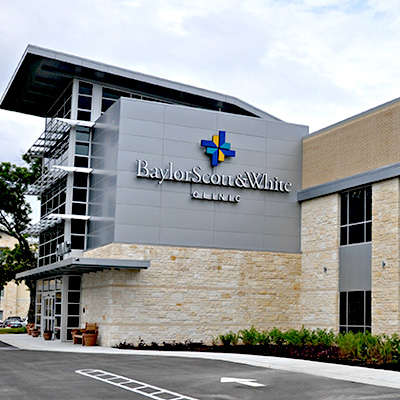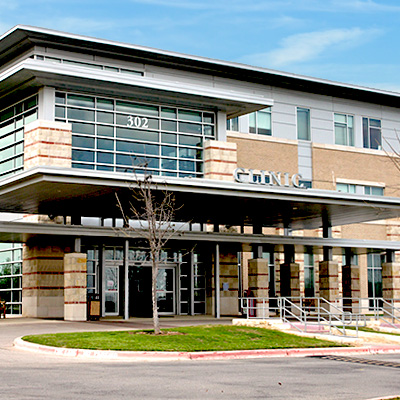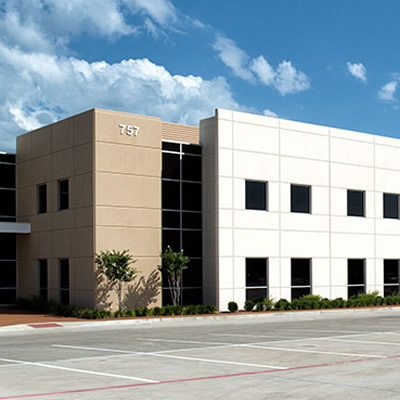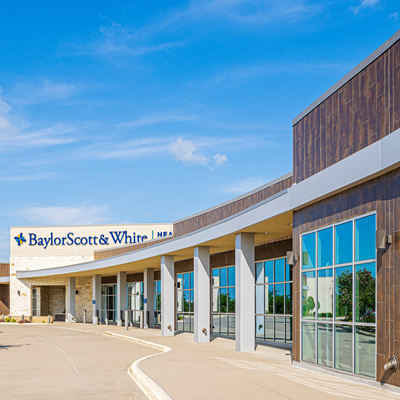What is a barium enema?
A barium enema is an imaging test that uses X-rays to take images of your large intestine—or colon. The test uses a contrast solution containing barium, which is delivered into your colon using a tube inserted in the rectum called an enema.
X-ray imaging alone doesn’t give your care team a good view of the colon. The barium contrast solution coats the inside of your colon, providing a clearer picture of its silhouette. It allows your team to get real-time images as the barium solution flows through your colon, an imaging technique known as fluoroscopy.
Your team can examine these images for any changes in your colon that might be a sign of a digestive condition.
Why might I need a barium enema?
Barium enemas aren’t used as often today because there are other more effective options. You might need a barium enema to look for signs of a digestive condition if you have symptoms or if you can’t have a more commonly used digestive test—like a colonoscopy.
The images from a barium enema might help find digestive diseases such as:
- Colorectal cancer or polyps
- Inflammatory bowel disease, including Crohn’s disease and ulcerative colitis
- Diverticulitis
- Irritable bowel syndrome
- Bowel obstruction
- Twisting of the colon
Barium enema vs colonoscopy
Barium enemas are no longer recommended by the U.S. Preventive Services Task Force as a first-line test for colon cancer screening and have largely been replaced by colonoscopy. The main reason is that colonoscopy is a better test to detect digestive problems, allows for biopsies and can remove polyps at the time of the procedure.
While both a barium enema and a colonoscopy can detect signs of digestive conditions, a barium enema is a less sensitive test and can miss small polyps and minor problems. If an issue is discovered on a barium enema, you will likely need a colonoscopy to get samples or remove polyps.
Barium enema is a less invasive test that isn’t usually performed under anesthesia like a colonoscopy. Another non-invasive option that does not require anesthesia is a virtual colonoscopy (also known as a CT colonography). However, all of these tests do require prep ahead of time to clean out the colon.
Barium enema prep
The prep for a barium enema is similar to the prep for a colonoscopy. You’ll need to take medications the evening before to ensure your colon is empty, allowing your team to get accurate images during the test. It’s important to follow your prep instructions carefully and completely.
Your doctor will give you step-by-step instructions for your specific test, but most people can expect to:
- Stop taking certain medications or supplements, such as blood thinners, non-steroidal anti-inflammatory drugs or iron, in the week before your test.
- The day before your barium enema, follow a clear liquid diet. This means you’ll only be allowed to drink liquids such as black coffee or tea, water, clear soda or broth.
- Take laxative medications the night before your test that will make you go to the bathroom often to clean out your colon.
- Use an enema or suppository to help clear out any remaining residue from your colon.
- Avoid eating or drinking anything after midnight.
The barium enema procedure
You’ll have your barium enema procedure in a special imaging room with the tools needed to perform a fluoroscopic X-ray. The barium solution will be delivered using an enema. The procedure takes about 30 to 60 minutes, but plan to be at the facility for a little over an hour to allow time for check-in, prep and a brief period of monitoring following your test.
Before the procedure
When you arrive on the day of your test, you’ll have a chance to talk to your care team about the test and sign consent forms. Then, your team will have you change into a gown and remove jewelry, eyeglasses or items with metal. Once in the exam room, you’ll lie on your side on the exam table to prepare for your test.
During the procedure
Your test will start with an X-ray to make sure your colon is clear. Then, your care team will insert a lubricated tube into the rectum to deliver the contrast solution. You may feel some discomfort or cramping as the barium goes into your colon. Sometimes, air will be pumped into your colon after the solution. This is called a double-contrast exam.
The X-ray machine may move, and you’ll be asked to change positions or hold your breath as your care team gets real-time images of your colon. Your doctor may also press on your stomach to help get better images.
You may feel a strong urge to go to the bathroom during the procedure. While it’s normal for some fluid to leak out during your test, you’ll want to resist the urge to have a bowel movement. Your care team will let you know when they have enough images so that you can go to the bathroom or use a bedpan. Taking deep breaths can help with any discomfort.
Once the images are taken, most of the barium contrast will be removed from your colon through the tube. You’ll then go to the bathroom or use a bedpan to pass any additional contrast solution out of your colon.
After the procedure
Immediately following your procedure, your care team will have you stay for a short period to monitor you before you go home. Depending on the medications used during your test, you may or may be unable to drive yourself home. Your care team will let you know ahead of time if you need a support person to come with you.
You can usually go back to your normal diet and activities after your test. But you may have some side effects that last a day or two—such as constipation, nausea, diarrhea or light-colored stools.
At home, focus on drinking plenty of water and eating foods high in fiber. If you go more than two days without a bowel movement, let your care team know. This could be a sign of a bowel impaction, which needs medical attention.
Understanding the results
After reviewing the images, a radiologist will provide a report with the results of your test. Your doctor will let you know the results and answer any questions about your next steps.
Results
Depending on the quality of the images, you may need other tests to give your care team more information.
- Negative result: A negative result means the radiologist didn’t find any abnormal areas in your colon on the images.
- Positive result: A positive barium enema result means something abnormal was found on your images. Your doctor might recommend follow-up tests, like a colonoscopy, to take samples and diagnose the cause.
Find a location near you
We offer barium enemas across North and Central Texas. We can help you arrange care at a location that best fits your needs.

Baylor Scott & White Clinic - Bryan West Villa Maria Road
2612 W Villa Maria Rd , Bryan, TX, 77807
- Monday: 7:20 am - 5:10 pm
- Tuesday: 7:20 am - 5:10 pm
- Wednesday: 7:20 am - 5:10 pm
- Thursday: 7:20 am - 5:00 pm
- Friday: 7:20 am - 5:00 pm

Baylor Scott & White Clinic - Cedar Park
910 E Whitestone Blvd , Cedar Park, TX, 78613
- Monday: 8:00 am - 5:00 pm
- Tuesday: 8:00 am - 5:00 pm
- Wednesday: 8:00 am - 5:00 pm
- Thursday: 8:00 am - 5:00 pm
- Friday: 8:00 am - 5:00 pm
- Monday: 7:00 am - 5:00 pm
- Tuesday: 7:00 am - 5:00 pm
- Wednesday: 7:00 am - 5:00 pm
- Thursday: 7:00 am - 5:00 pm
- Friday: 7:00 am - 5:00 pm
- Saturday: 9:00 am - 2:00 pm

Baylor Scott & White Clinic - Georgetown
4945 Williams Dr , Georgetown, TX, 78633
- Monday: 7:30 am - 5:00 pm
- Tuesday: 7:30 am - 5:00 pm
- Wednesday: 7:30 am - 5:00 pm
- Thursday: 7:30 am - 5:00 pm
- Friday: 7:30 am - 5:00 pm

Baylor Scott & White Clinic - Pflugerville Medical Center (Building 1)
2600 E Pflugerville Pkwy Bldg 1, Ste 200, Pflugerville, TX, 78660
- Monday: 8:00 am - 5:00 pm
- Tuesday: 8:00 am - 5:00 pm
- Wednesday: 8:00 am - 5:00 pm
- Thursday: 8:00 am - 5:00 pm
- Friday: 8:00 am - 5:00 pm
- Monday: 7:30 am - 4:00 pm
- Tuesday: 7:30 am - 4:00 pm
- Wednesday: 7:30 am - 4:00 pm
- Thursday: 7:30 am - 4:00 pm
- Friday: 7:30 am - 4:00 pm

Baylor Scott & White Clinic - Round Rock 300 University
300A University Blvd , Round Rock, TX, 78665
- Monday: 8:00 am - 5:00 pm
- Tuesday: 8:00 am - 5:00 pm
- Wednesday: 8:00 am - 5:00 pm
- Thursday: 8:00 am - 5:00 pm
- Friday: 8:00 am - 5:00 pm

Baylor Scott & White Clinic - Round Rock 302 University
302 University Blvd , Round Rock, TX, 78665
- Monday: 8:00 am - 5:00 pm
- Tuesday: 8:00 am - 5:00 pm
- Wednesday: 8:00 am - 5:00 pm
- Thursday: 8:00 am - 5:00 pm
- Friday: 8:00 am - 5:00 pm

Baylor Scott & White Clinic - Temple
2401 S 31st St , Temple, TX, 76508
- Monday: 8:00 am - 5:00 pm
- Tuesday: 8:00 am - 5:00 pm
- Wednesday: 8:00 am - 5:00 pm
- Thursday: 8:00 am - 5:00 pm
- Friday: 8:00 am - 5:00 pm

Baylor Scott & White Diagnostic Imaging Center at North Dallas
9101 N Central Expy Ste 100, Dallas, TX, 75231

Baylor Scott & White Emergency Medical Center - Cedar Park
900 E Whitestone Blvd , Cedar Park, TX, 78613

Baylor Scott & White Imaging Center - Forney
763 E US Hwy 80 Ste 120, Forney, TX, 75126
- Monday: 8:00 am - 5:00 pm
- Tuesday: 8:00 am - 5:00 pm
- Wednesday: 8:00 am - 5:00 pm
- Thursday: 8:00 am - 5:00 pm
- Friday: 8:00 am - 5:00 pm

Baylor Scott & White Imaging Center - Greenville
4400 Interstate 30 W Ste 200, Greenville, TX, 75402
- Monday: 8:00 am - 5:00 pm
- Tuesday: 8:00 am - 5:00 pm
- Wednesday: 8:00 am - 5:00 pm
- Thursday: 8:00 am - 5:00 pm
- Friday: 8:00 am - 5:00 pm

Baylor Scott & White Imaging Center - Rockwall
1005 W Ralph Hall Pkwy Ste 121, Rockwall, TX, 75032
- Monday: 8:00 am - 5:00 pm
- Tuesday: 8:00 am - 5:00 pm
- Wednesday: 8:00 am - 5:00 pm
- Thursday: 8:00 am - 5:00 pm
- Friday: 8:00 am - 5:00 pm

Baylor Scott & White Imaging Center - Wylie
2300 W FM 544 Ste 110, Wylie, TX, 75098
- Monday: 8:00 am - 5:00 pm
- Tuesday: 8:00 am - 5:00 pm
- Wednesday: 8:00 am - 5:00 pm
- Thursday: 8:00 am - 5:00 pm
- Friday: 8:00 am - 5:00 pm

Baylor Scott & White Medical Center - Austin
5245 W US Hwy 290 Service Rd , Austin, TX, 78735

Baylor Scott & White Medical Center - Brenham
700 Medical Pkwy , Brenham, TX, 77833

Baylor Scott & White Medical Center - Buda
5330 Overpass Rd , Buda, TX, 78610

Baylor Scott & White Medical Center - Centennial
12505 Lebanon Rd , Frisco, TX, 75035

Baylor Scott & White Medical Center - College Station
700 Scott and White Dr , College Station, TX, 77845

Baylor Scott & White Medical Center - Grapevine
1650 W College St , Grapevine, TX, 76051

Baylor Scott & White Medical Center - Hillcrest
100 Hillcrest Medical Blvd , Waco, TX, 76712

Baylor Scott & White Medical Center - Irving
1901 N MacArthur Blvd , Irving, TX, 75061

Baylor Scott & White Medical Center - Lake Pointe
6800 Scenic Dr , Rowlett, TX, 75088

Baylor Scott & White Medical Center - Lakeway
100 Medical Pkwy , Lakeway, TX, 78738

Baylor Scott & White Medical Center - Marble Falls
810 W State Hwy 71 , Marble Falls, TX, 78654

Baylor Scott & White Medical Center - McKinney
5252 W University Dr Highway 380 at Lake Forest Drive, McKinney, TX, 75071

Baylor Scott & White Medical Center - Pflugerville (Building 1)
2600 E Pflugerville Pkwy Bldg 1, Ste 100, Pflugerville, TX, 78660

Baylor Scott & White Medical Center - Plano
4700 Alliance Blvd , Plano, TX, 75093

Baylor Scott & White Medical Center - Round Rock
300 University Blvd , Round Rock, TX, 78665

Baylor Scott & White Medical Center - Sunnyvale
231 S Collins Rd , Sunnyvale, TX, 75182

Baylor Scott & White Medical Center - Taylor
305 Mallard Ln , Taylor, TX, 76574

Baylor Scott & White Medical Center - Temple
2401 S 31st St , Temple, TX, 76508

Baylor Scott & White Medical Center - Waxahachie
2400 N Interstate 35E , Waxahachie, TX, 75165

Baylor Scott & White MedProvider
3417 Gaston Ave Ste 1000 & 1100, Dallas, TX, 75246
- Monday: 7:30 am - 4:30 pm
- Tuesday: 7:30 am - 4:30 pm
- Wednesday: 7:30 am - 4:30 pm
- Thursday: 7:30 am - 4:30 pm
- Friday: 7:30 am - 4:30 pm

Baylor Scott & White Outpatient Imaging Center - Hillcrest
50 Hillcrest Medical Blvd Ste 103A, Waco, TX, 76712
- Monday: 8:00 am - 5:00 pm
- Tuesday: 8:00 am - 5:00 pm
- Wednesday: 8:00 am - 5:00 pm
- Thursday: 8:00 am - 5:00 pm
- Friday: 8:00 am - 5:00 pm

Baylor Scott & White Specialty Clinic - Killeen Hemingway
2405 S Clear Creek Rd , Killeen, TX, 76549
- Monday: 8:00 am - 5:00 pm
- Tuesday: 8:00 am - 5:00 pm
- Wednesday: 8:00 am - 5:00 pm
- Thursday: 8:00 am - 5:00 pm
- Friday: 8:00 am - 5:00 pm

Baylor Scott & White Surgical Hospital - Fort Worth
1800 Park Place Ave , Fort Worth, TX, 76110
Frequently asked questions
-
Why would you need a barium enema after a colonoscopy?
Your doctor might recommend a barium enema after a colonoscopy if your colonoscopy couldn’t be completed. While a colonoscopy or a CT colonography (also known as a virtual colonoscopy) is usually the preferred method to look for signs of digestive conditions, barium enema could be an additional option.
-
How long does a barium enema take?
A barium enema exam takes about 30 minutes to an hour. Plan to be at the facility for an hour or two to allow plenty of time for prep, the actual test and monitoring afterward. You’ll also want to plan time the day before to complete your bowel prep.
-
Are barium enemas safe?
Yes. A barium enema is generally a safe procedure. Some side effects include a small amount of radiation exposure, discomfort or digestive symptoms. There are also very small risks of an allergic reaction to the barium or a bowel perforation, a small hole in your colon.
-
Can a barium enema detect colon cancer?
Yes. Your care team can use a barium enema to detect changes or abnormal growths in your colon, including colon cancer or precancerous polyps. However, it’s not used as often as other tests to screen for colon cancer, such as a colonoscopy.
-
Does a barium enema hurt?
A barium enema can be uncomfortable, but it shouldn’t cause pain. Some people describe feeling pressure, cramping, bloating or the urge to go to the bathroom. You may have minor digestive symptoms or bloating afterward, but these typically go away quickly.

